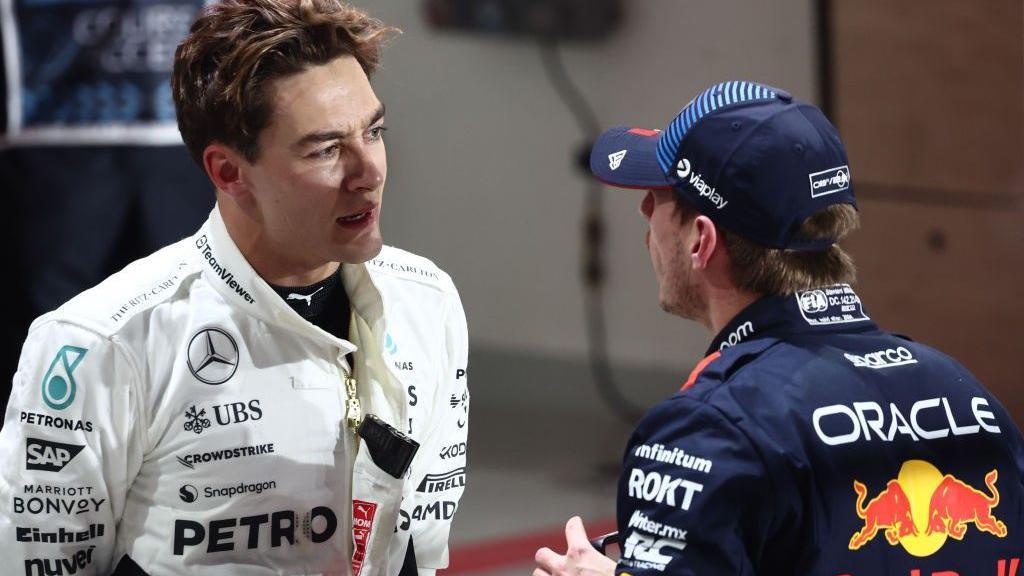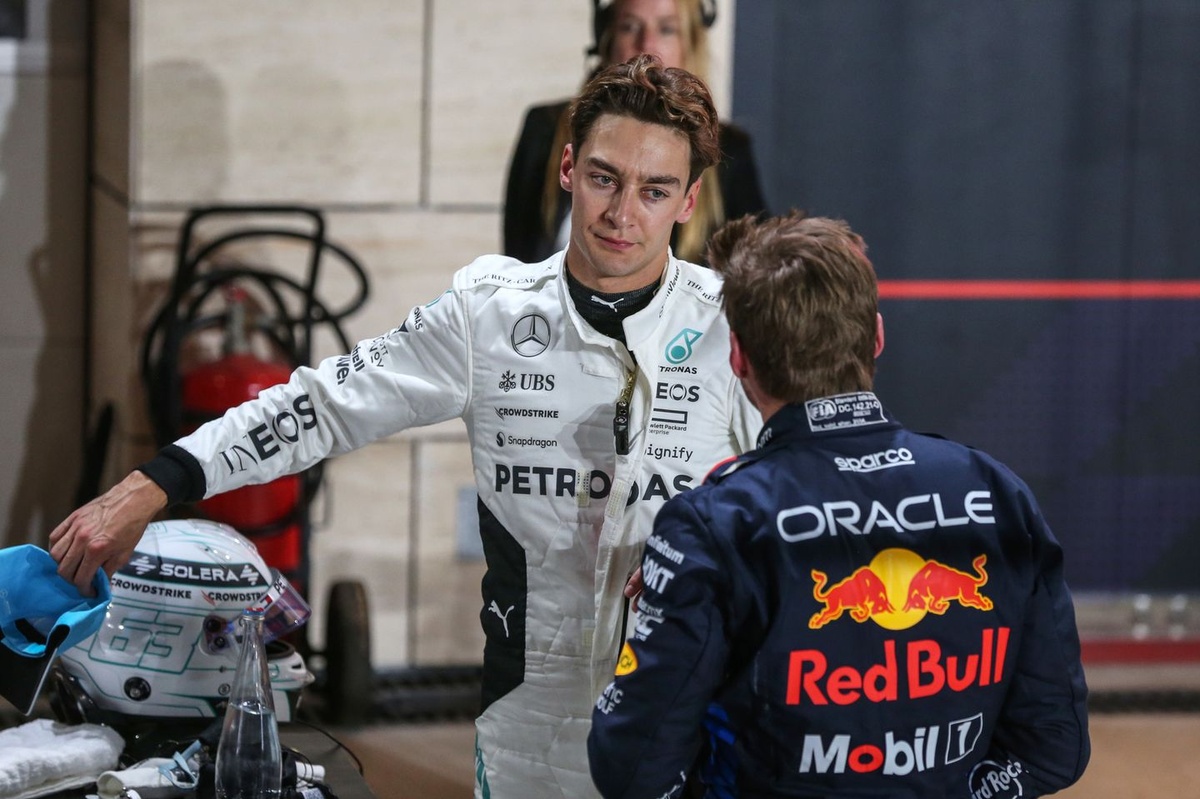The champagne had barely dried on the Miami Grand Prix podium when Formula 1’s next controversy erupted—not on the track, but in the stewards’ room. Red Bull and Max Verstappen, still smarting from a podium finish lost by a mere two seconds, launched an official protest against Mercedes driver George Russell, claiming he’d bent the rules under double yellow flags.

Here’s what went down.
During a tense Miami Grand Prix, marked by scorching heat, brutal tire wear, and pit-stop poker, the battle for third was a nail-biter. Verstappen was hunting Russell, the McLarens were comfortably ahead, and everything was set for a final showdown. Then, on lap 28, chaos: Oliver Bearman’s Haas ground to a halt, triggering a virtual safety car (VSC). Yellow flags waved. Opportunity knocked.
Russell, just behind the stricken car, made a snap decision—dive into the pits under the VSC. A pit stop under VSC conditions is a golden ticket, costing far less time than under green flags. That move allowed Russell to rejoin the race ahead of Verstappen, snatching the final podium spot in the process.
But Red Bull wasn’t clapping.
From Verstappen’s cockpit came a pointed radio message: had Russell really slowed down enough under those double yellows? The team smelled something fishy. Not content to let it slide, Red Bull filed a formal protest after the race, accusing Russell of failing to “significantly reduce speed,” as required under FIA regulations.

At the heart of the complaint lay a crucial clause in the FIA’s International Sporting Code: under double waved yellow flags, a driver must slow down “significantly” and be prepared to stop or change direction. Red Bull argued Russell hadn’t done enough. While telemetry showed he lifted off the throttle, they claimed the actual speed reduction was negligible—essentially a token lift rather than meaningful compliance.
Their evidence? A comparison with Verstappen himself, who had slowed more noticeably through the same yellow flag zone. Red Bull insisted Verstappen’s caution was the correct standard, while Russell’s minimal lift felt more like box-ticking than obeying the spirit of the rules.
Mercedes, naturally, saw it differently.
Their defense pointed to telemetry showing Russell lifted the throttle by about 25%, dropping engine torque by 30%. That, they argued, met the “significant” reduction standard. They also cited historical precedent: in Formula 1, lifting the throttle—rather than slamming the brakes—is a common way to demonstrate compliance under yellows without endangering following drivers or losing unnecessary time.
In Mercedes’ view, Russell played it smart and legal.
Then came the stewards’ ruling.
After poring over throttle traces, GPS data, sector times, and onboard footage, the FIA sided with Mercedes. The stewards ruled that Russell’s throttle lift was “sufficient” to show compliance, even though his absolute speed through the yellow flag zone didn’t dramatically drop. Crucially, they emphasized that “significant speed reduction” doesn’t have to mean a raw numerical drop in speed—it’s about reducing pace relative to normal racing speed in that context.
In plain English: Russell slowed enough compared to what he’d normally be doing in that part of the track, even if the speedometer wasn’t screaming “slow.” Case closed.
But was it really?

The ruling left many fans and pundits scratching their heads. By clearing Russell, the FIA effectively reaffirmed that “significant” speed reduction is a judgment call, not a strict number. Red Bull may have lost the protest, but they spotlighted a regulatory gray area—a zone that clever drivers and teams might exploit in the future.
And Verstappen? Ironically, his greater caution may have cost him the podium. By slowing more than necessary, he played it safe… and lost out to Russell’s razor-thin margin. In a sport measured in milliseconds, that stings.
The protest also served as a shot across the bow. Even if unsuccessful, Red Bull’s challenge sent a message to rivals and regulators alike: “We’re watching. Don’t get comfortable.” It’s the kind of psychological warfare that plays out not just on Sundays but in courtrooms, press conferences, and private meetings.
Will this ruling embolden drivers to lift less under yellows? Will teams push stewards to clarify what “significant” really means? One thing’s for sure: the Miami GP wasn’t just about who stood on the podium—it was a masterclass in Formula 1’s endless cat-and-mouse game with its own rulebook.
And if you think the season’s biggest controversy is over, buckle up. The next protest is probably already in the works.